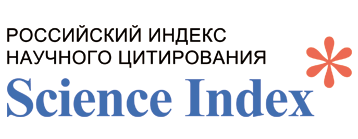SYNTHESIS, STRUCTURE AND ANTIMICROBIAL ACTIVITY OF AZOMETHINES, DERIVATIVES OF 4-(O-LUPINYL)BENZALDEHYDE
Keywords:
quinolizidine alkaloids, chlorlupinine, 4-(O-lupinil)benzaldehyde, azomethines, NMR 1H-, 13C-spectra, antimicrobial activity, test strain, incubation.Abstract
The article describes the results of studies on the synthesis and structural features of 4-lupinylbenzaldehydes and azomethine derivatives of the lupinine alkaloid. Chemical modification of the lupinine alkaloid was carried out by the halomethylene group in the C-1 position of the quinolysin backbone. The reactions were carried out in several stages. The results of the synthesis of 4-lupinylbenzaldehydes (4-hydroxybenzaldehyde and 4-hydroxy-3-ethoxy-benzaldehyde) synthons in the synthesis of biologically active substances with yields of 67.3% and 74.0%, respectively, are presented. The interaction of 4-lupinylbenzaldehyde with 4-chlorobenzylamine and vinyl ester of monoethanolamine synthesized lupinyl-containing azomethines with yields of 78.4% and 77.4%, respectively. The structure of the obtained compounds was established based on the analysis of the ¹H and 13C NMR spectra, the multiplicity of signals in the 13C NMR spectra was determined from the spectra recorded in the J-modulation mode. The assignment of signals in the spectra was carried out using various modern methods of correlation spectroscopy 1H-1H (COZY), and 1H-13C (HMBC, HSQC). The values of chemical shifts, multiplicity and integral intensity of 1H and 13C signals in one-dimensional NMR spectra are determined. Bioscreening of new 4-lupinylbenzaldehydes and azomethines was carried out, among which substances with high antimicrobial activity were identified. The antimicrobial activity of all the presented samples was studied on reference test microorganisms: facultative anaerobic gram-positive cocci of Staphylococcus aureus ATCC 6538, aerobic gram-positive spore-forming Bacillus subtilis ATCC 6633, gram-negative rods facultative anaerobes of Escherichia coli ATCC 25922 aerobic Pseudomonas aeruginosa ATCC 27853 and yeast fungus Candida albicans ATCC 10231 by diffusion into agar (wells).

















